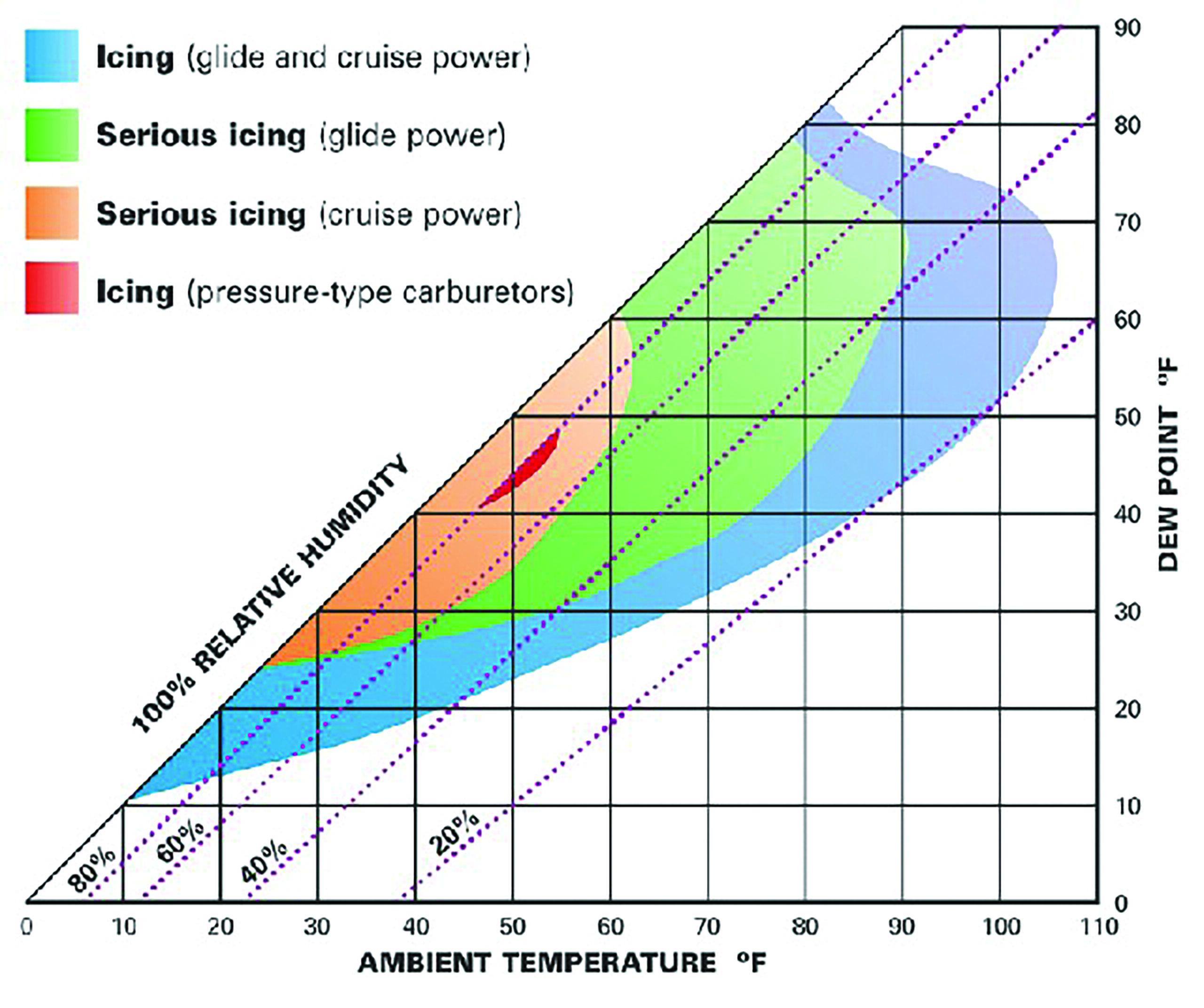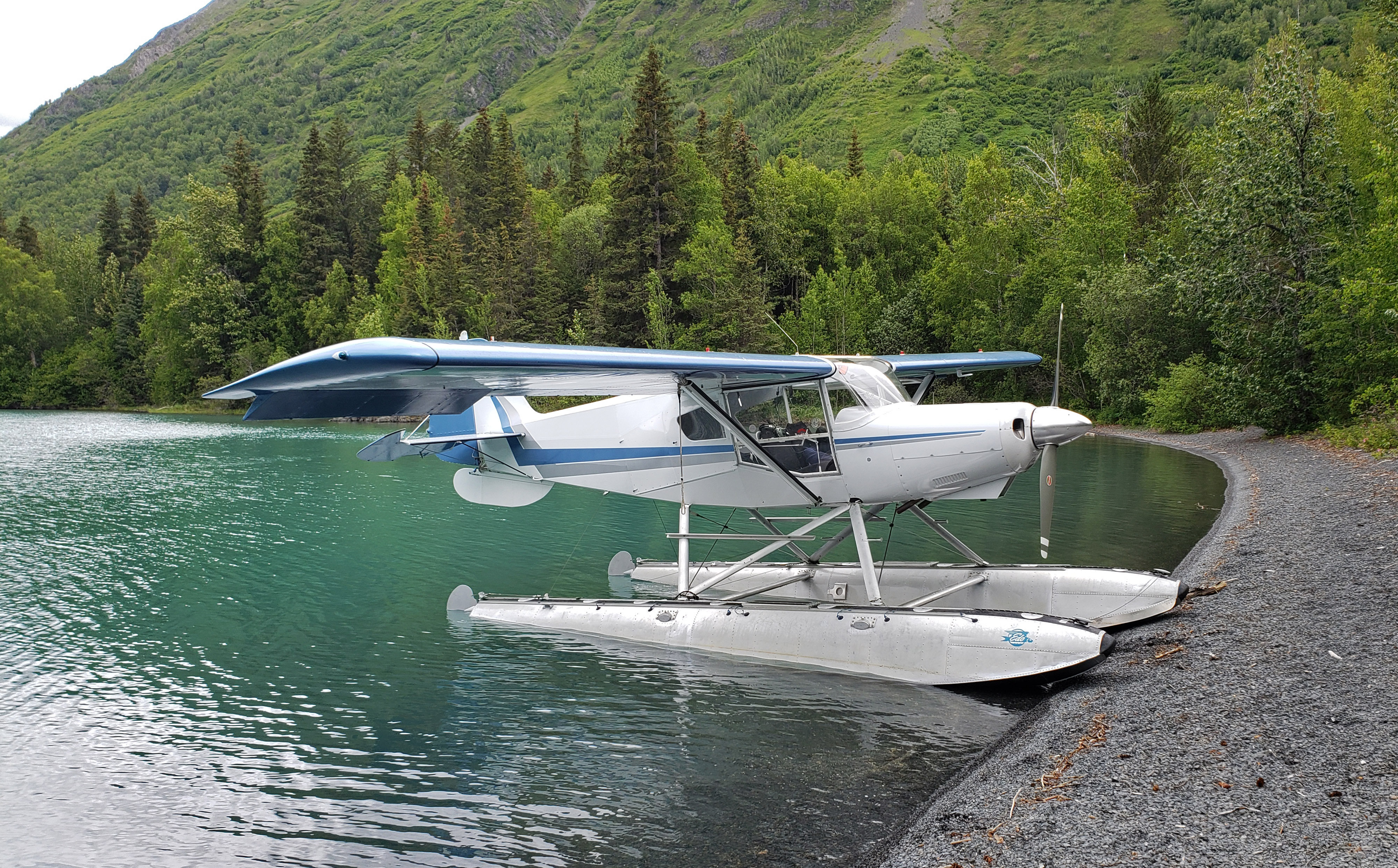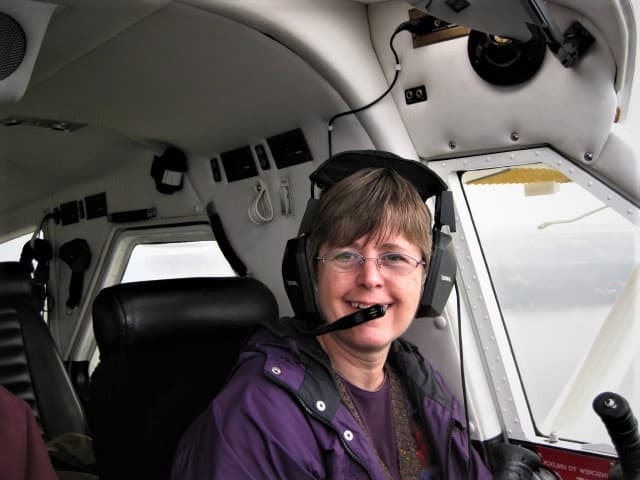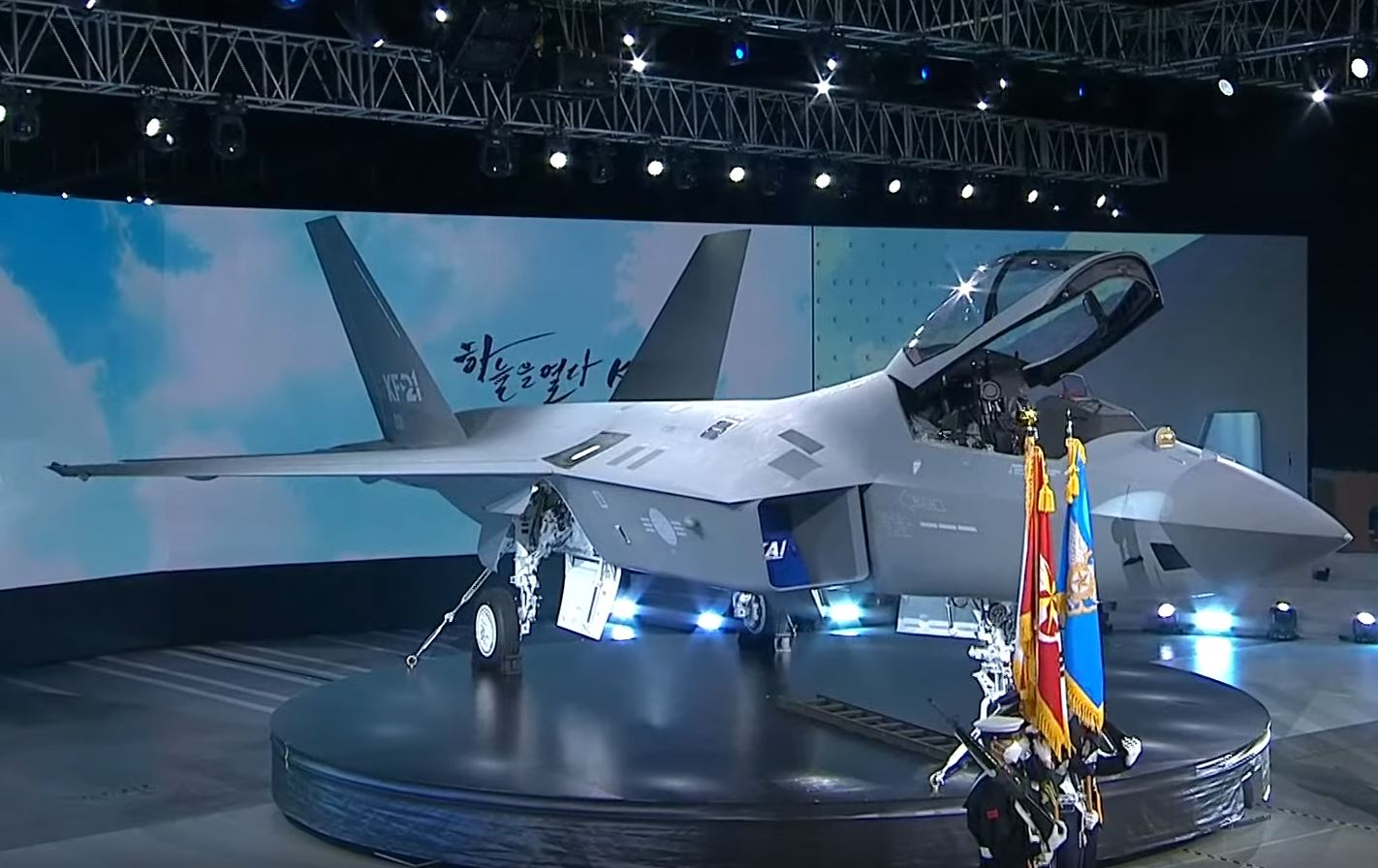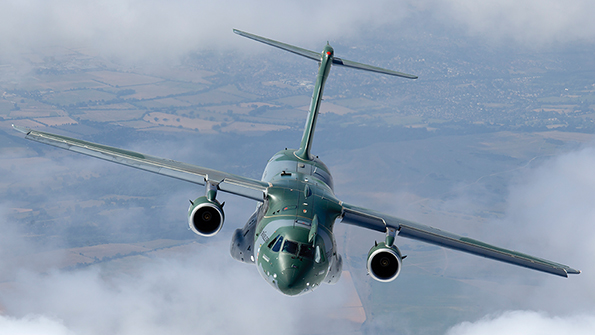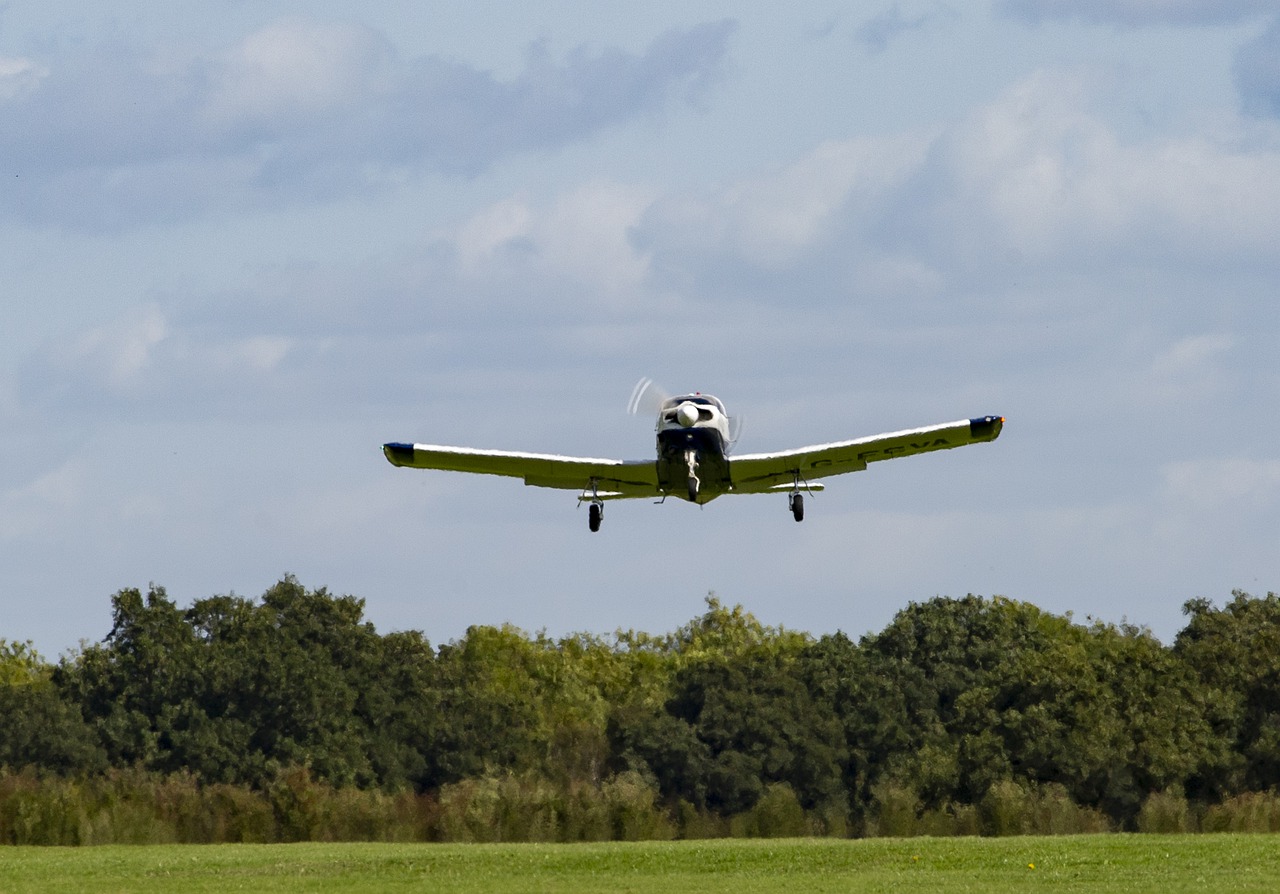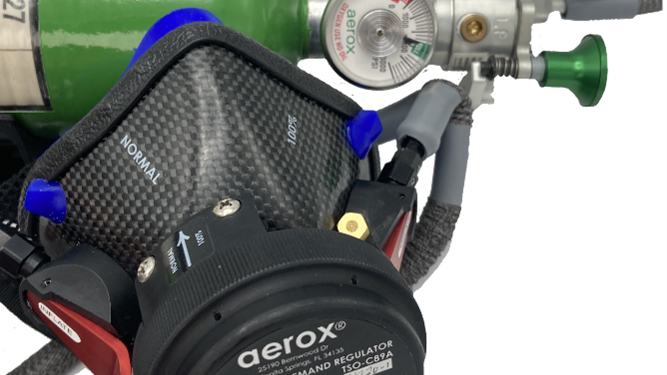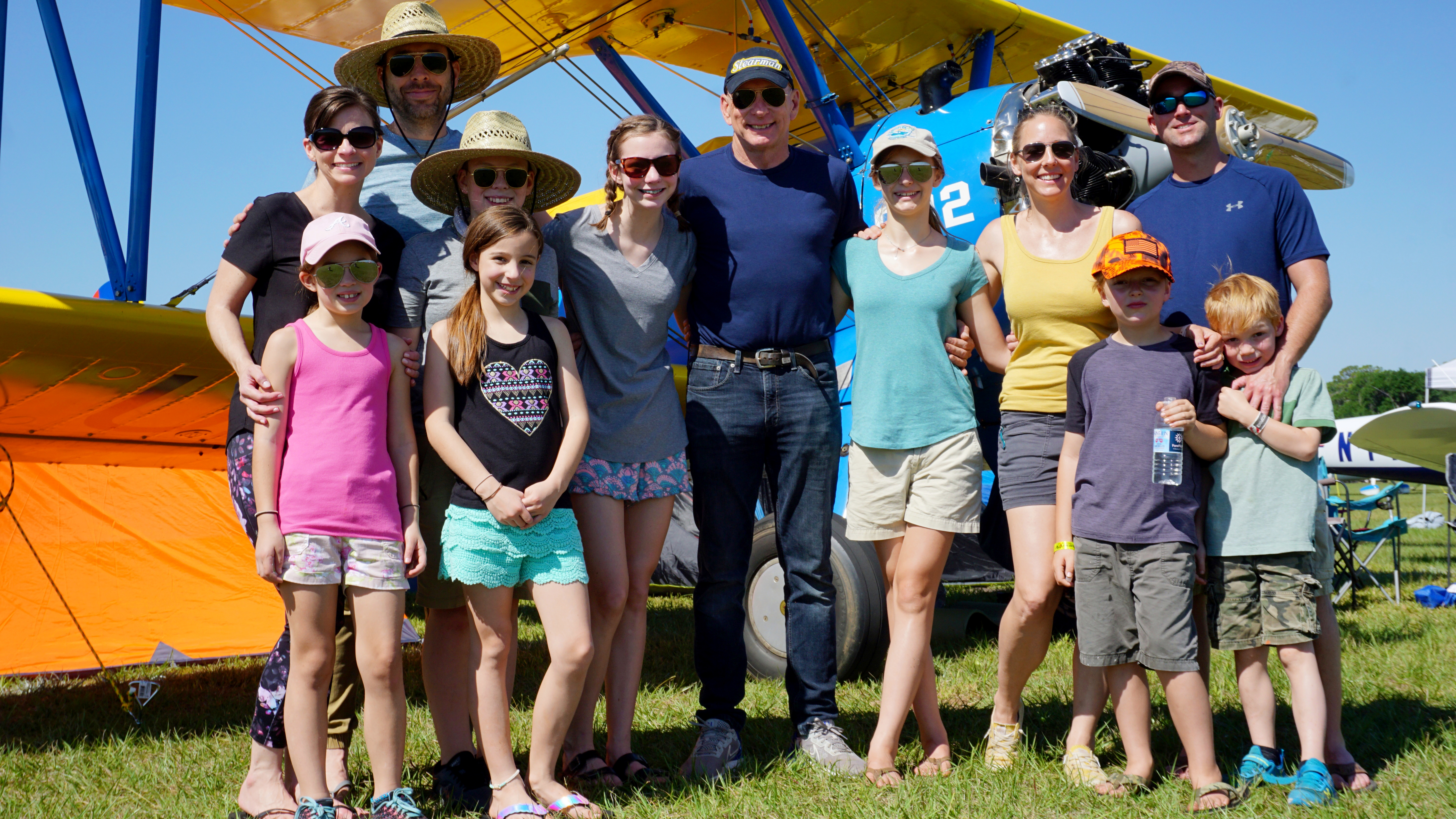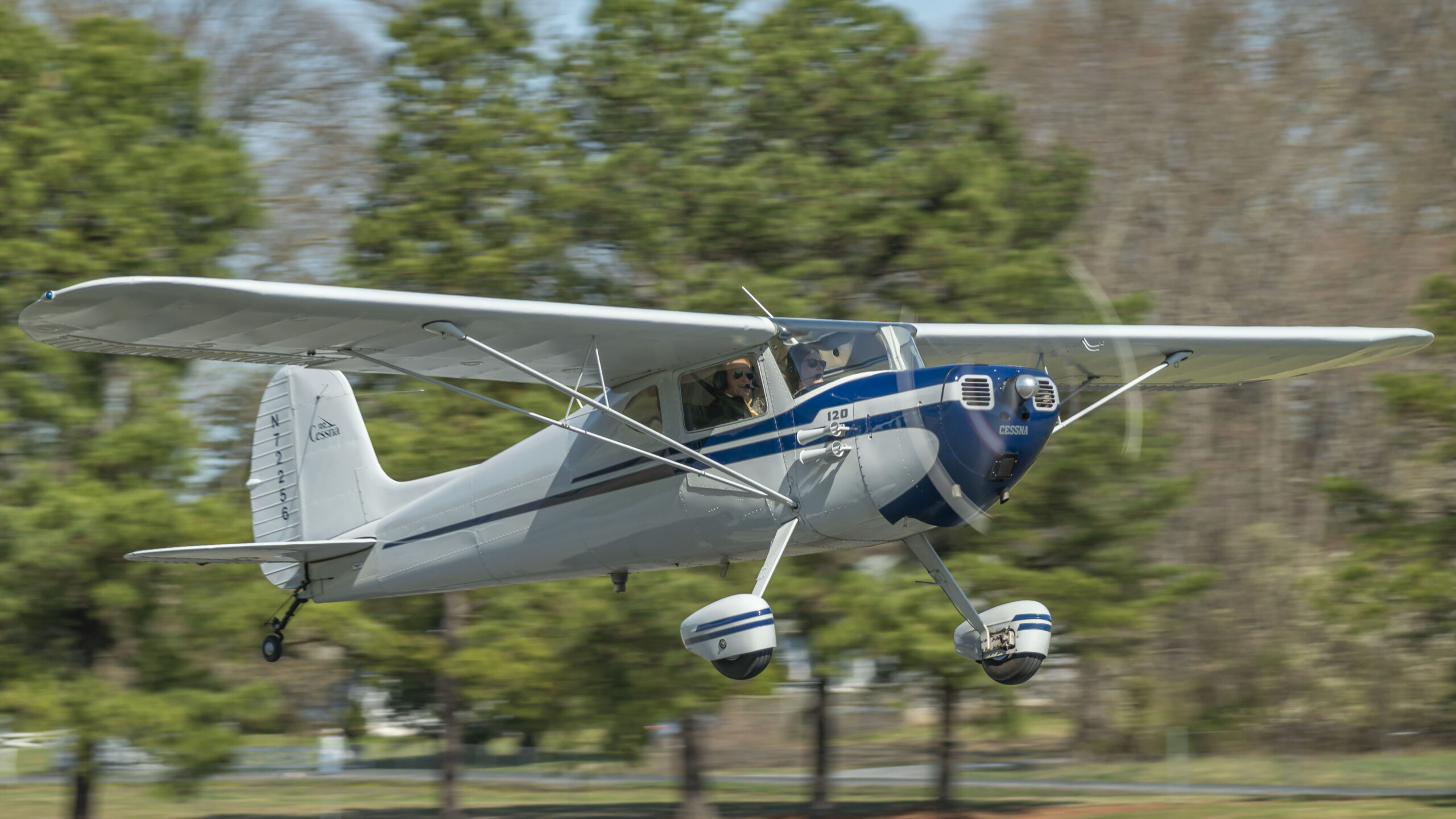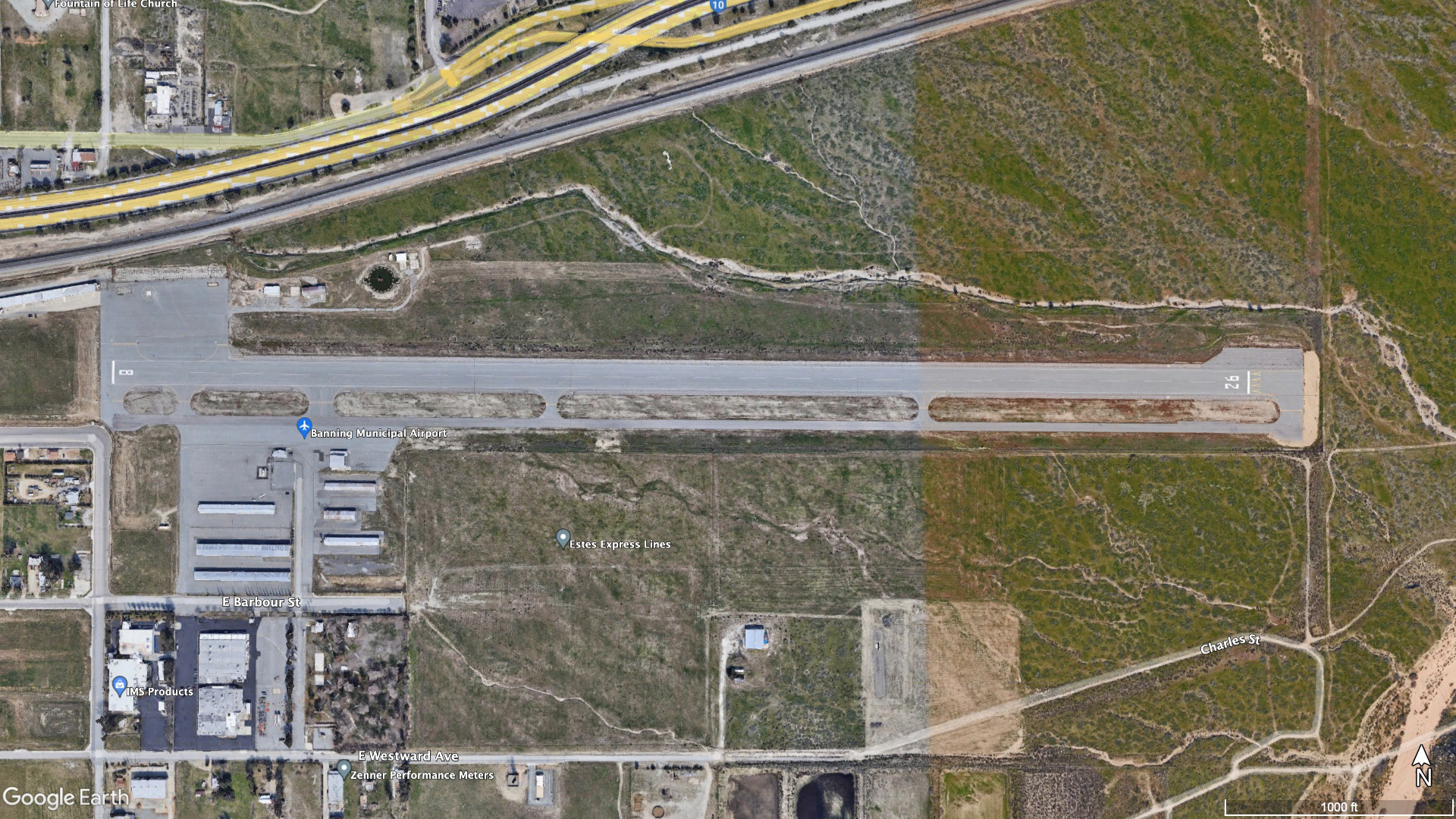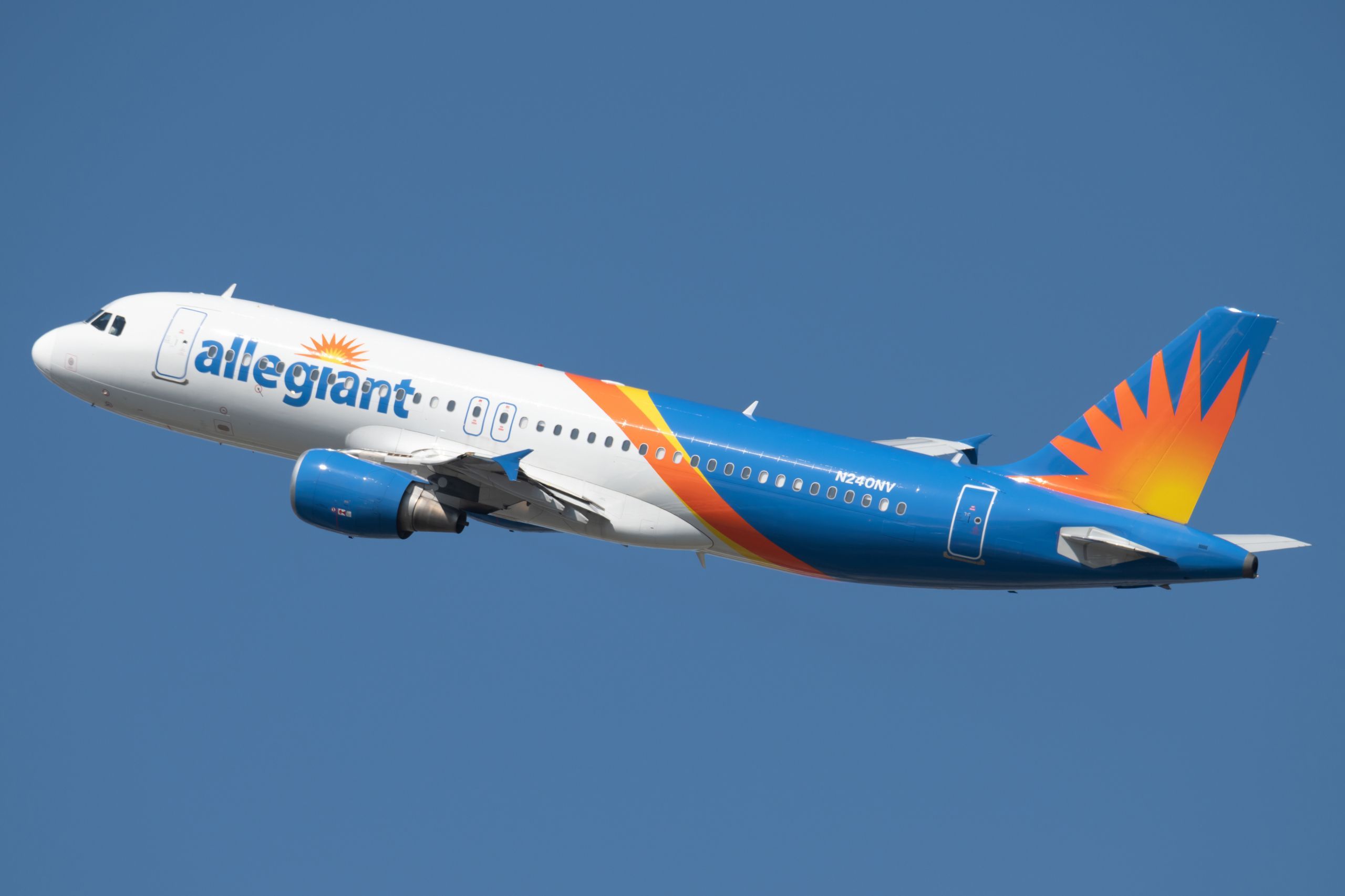IAI Heron
IAI Heron user+1@localho… Wed, 01/05/2022 - 21:17 The Israel Aerospace Industries (IAI) Heron is a Group 5 UAS powered by a single Rotax 914 4-cylinder piston engine supplying 115 hp (86 kW) of power to the propeller. Since its inception the...

The Israel Aerospace Industries (IAI) Heron is a Group 5 UAS powered by a single Rotax 914 4-cylinder piston engine supplying 115 hp (86 kW) of power to the propeller. Since its inception the family has spawned a variety of scaled up or down derivatives with different powerplants, including the Heron TP, Super Heron HF, Heron MK. II and Tactical Heron. As of the time of this writing, more than 160 Herons are in service with military operators worldwide.
Program History
The Heron originated in a market study performed by IAI in the 1990s. This study indicated an emerging requirement in both the civil and military markets for a UAS with an endurance in excess of 24 hours, an operational altitude of between 25,000 ft and 30,000 ft and the capability to carry a variety of avionics and sensors. It also needed to have a short take-off and landing capability, low stall speed of 50 kt (93 km/h), mean time between critical failures of more than 100 hours and a mean time between loss in excess of 3000 hours. These requirements make Heron a medium altitude long-endurance (MALE) UAS.
IAI believed a UAS in this class would be necessary to perform electronic intelligence, communications relay, maritime surveillance, wide-area surveillance and reconnaissance, electronic warfare and airborne early warning tasks. It also identified civil roles in forest management, environmental surveillance, disaster management, pipeline inspection, border security, law enforcement and weather surveillance.
To achieve the design objectives, the Heron was designed with a high aspect ratio to maximize fuel efficiency, an all-composite structure to minimize weight and wing fuel tanks to further improve endurance. IAI evaluated a variety of aerodynamic configurations incorporating these features. It ultimately opted for a twin-boom design with a rear-mounted engine because of the advantages the configuration carried for payload integration. The lack of a forward engine freed space for avionics and mitigated any center of gravity issues that would have existed with both forward sensors and a front-mounted engine.
Other configurations that were studied included:
- An aft fuselage-mounted pusher engine.
- An aft fuselage engine configuration but with a boom aft of the engine to offset the propeller.
- An aft fuselage high-mounted pusher engine with a boom running underneath the propeller to place the tail surfaces aft of the engine.
- A forward mounted engine.
During development, IAI sought to minimize costs and rapidly mature the Heron’s design. It also sought to closely integrate the design team with production so that manufacturing problems could quickly be resolved during prototyping.
The Heron entered production in 1994. In 2007, the Heron became compliant with Israeli civil aerospace management requirements and was certified to operate in Israeli airspace for non-military purposes.
The Israeli Air Force procured its first Herons under a September 2005 contract. The contract was valued at more than $50 million ($66.4 million USD in 2021).
Features
Overall Design
The Heron has a 54.5 ft. (16.6 m) wing with an SA-21 airfoil and a high aspect ratio of 21. It was designed with a lightweight structure incorporating sandwiched composites, with polystyrene and NOMEX honeycomb cores. Where required the composites are reinforced with unidirectional spars.
The Heron has retractable landing gear laid out in a tricycle arrangement, and the main gear retract into bays built into the booms on either side of the fuselage. The nosewheel is steered electrically, and the brake disks on the main gear are hydraulically operated. Because of the high wing, the gear bays are higher than the fuselage and accordingly do not obstruct any sensors mounted under it. The fuselage itself is trapezoidal in shape and has 23.6 in. (60 cm) of ground clearance with the gear extended.
The wing attachments and hardpoints are part of the composite structure to minimize the use of metallic fittings and fasteners. The same technique is used for connecting the wing inner and outer sections, the boom to wing attachments and the engine mount. The Heron is all-weather capable and includes an anti-icing system. Its flaps are noteworthy for their high length of travel, from -15-deg. to 60-deg.
Engine
The Heron is powered by a single Rotax 914 reciprocating engine. The Rotax 914 is essentially a Rotax 912 fitted with a single-stage turbocharger supplied by Garrett (now Honeywell). It is a four-stroke, four-cylinder liquid-cooled engine with an electric starter and a double ignition system. It can supply 115 hp (86 kW) of power at take-off and 100 hp (74.6 kW) continuous up to 15,000 ft. (4,572 m). The engine supplies power to a two-blade variable-pitch propeller with a 2.3 ft. (1.7 m) diameter.
The hydraulic system is immediately to the fore of the engine bay. The fuselage fuel tank is forward of the hydraulics. Each of the two wing fuel tanks are integral components of the wing’s composite structure, and not separate bladders placed in the wing.
Avionics
The Heron’s original avionics suite was based on that of the IAI/TRW (now Northrop Grumman) RQ-5 Hunter UAS. They are redundant and stored in a single bay on a removable rack to ease maintenance. The Heron can taxi, takeoff and land autonomously.
The aircraft is equipped with two 28 V alternators running off the engine that are wired in parallel to share load. Each supplies a maximum 3.5 kW of electrical power to the Heron in continuous operation, for a total of 7 kW available for flight and mission avionics. In practice not all of the current can be shared in parallel mode, so a minimum of 6.3 kW is available.
Heron has a Ku-band ELK-1891 satellite communications (SATCOM) terminal so that it can operate over the horizon. If it loses datalink to its ground control station, it automatically returns home. It was originally controlled from the MALAT Advanced Ground Control Station (AGCS) but can now also be controlled from the newer Unified Control Station (UCS).
Payloads
The Heron has two internal bays to house its sensor payloads, one in the nose and one in the center of the fuselage. The nose bay has a volume of 153 L and the primary bay a volume of 643 L. The previously mentioned flight avionics bay is located between the two payload bays. IAI says the Heron can carry up to 1,036 lb. (470 kg) of payload.
Heron payloads include:
- The IAI M19 electro-optical/infrared (EO/IR) camera gimbal. The M19 has an integrated inertial navigation system (INS) and laser rangefinder, and can slew at up to 100-deg/sec.
- The IAI MOSP3000-HD EO/IR gimbal, which has similar capabilities to the M19 but at a lower weight and size.
- The ELM-2055 synthetic aperture radar (SAR), which also has a ground moving-target indication (GMTI) capability and a GMTI track-while-scan capability.
- Communications intelligence (COMINT) equipment such as HF, VHF and UHF direction finding antennas. This includes IAI ELTA’s ELK-7065 HF direction-finding and 3D geolocation system and the ELK-7071 interferometric direction-finding system, which covers the 20 MHz to 3 GHz range.
- Global system for mobile communications (GSM) COMINT equipment allowing for intercept of cellular phone communications.
- Electronic support measures and electronic intelligence equipment including the ELTA ELL-8385, an ESM system covering the 0.5 to 18 GHz band. The system is capable of automatically identifying detected emitters.
- The ELTA ELM-2022U Maritime Patrol Radar (MPR), an X-band surface search radar also capable of SAR and GMTI operation. It also has an integrated identification friend-or-foe (IFF) and automatic identification system (AIS) capability.
- The ELTA ELL-8265 radar warning and locating system. It geolocates emitters and displays them to operators in the ground control station.
Variants
Heron Mk. I
The Mk. I is the original variant of the Heron as described in the “Features” section. It is usually described simply as the “Heron,” or as the “Heron 1.” It is also called “Machatz 1.”
Heron TP (Eitan)
The Heron TP is a derivative of the Heron that first flew in 2004. It can operate at altitudes up to 50,000 ft. (15,240 m). To achieve this, it carries a PT6A-67A turboprop engine and is much larger than the other Heron variants, with an 85.3 ft. (26 m) wingspan. The PT6A supplies 1,200 hp (895 kW) of power at takeoff to the Heron TP. All of the Heron TP’s flight avionics are triple redundant, and the drone has an endurance in excess of 70 hours.
While some sources suggest the Heron TP has a nascent weapons capability, IAI pointedly avoids mentioning an armed configuration for the system in official media and press releases. Nevertheless, Germany’s Heron TP acquisition was originally intended to include a strike capability, which was explicitly mentioned by Airbus in its 2018 press release on the contract award. [See the Germany entry under the “Production and Delivery History” section for more details].
Harfang
Harfang is the French version of the Heron Mk. I. Control of the Harfang can be handed off between two different GCS in flight and can transmit live full motion video directly to ground troops via the manpack ROVER 3 – ROVER 6 radio terminals.
Super Heron HF
Unveiled at the 2014 Singapore Airshow, the Super Heron Heavy-Fuel (HF) is powered by a DieselJet TDA CR 2.0 16V diesel engine instead of the Rotax 914. It also features blended winglets to reduce drag and to help compensate for the weight of the new engine. The engine supplies 214.6 hp (160 kW) of power at takeoff and 190.4 hp (142 kW) in continuous operation. The Super Heron first flew in 2012.
Because of the higher-power engine and the new winglets, the Super Heron supports an enhanced maximum takeoff weight of 3,200 lb. (1,450 kg) and an increased maximum speed of over 150 kt (278 km/h). Its flight ceiling and endurance are unchanged from the original Heron. It also has an enlarged airframe to permit carriage of a larger SATCOM antenna and larger payloads.
Heron Mk. II
The Heron Mk. II carries a Rotax 915 iS engine in place of the Rotax 914 used on the base Heron. This new engine supplies 141 hp (105.1 kW) at takeoff and 135 hp (100.7 kW) in continuous operation. The Mk. II was introduced at the Singapore Airshow in February 2020. To compensate for the enhanced engine, its forward fuselage is slightly enlarged. The fuselage modifications also include structural strengthening to accommodate heavier payloads including sonobuoys and magnetic anomaly detectors for antisubmarine warfare duties.
On Jan. 25, 2021 IAI announced that it had secured an unnamed launch customer for the Heron Mk. II. This customer, located in central Asia, would buy one system outright and lease another for an unspecified length of time.
Tactical Heron
The Tactical Heron is a 70% scaled-down variant of the Heron with a 32.8 ft. (10 m) wingspan. It is powered by the Rotax 912iSC gasoline engine. This Rotax 912 variant supplies 100 hp (74.6 kW) of power at takeoff and differs from earlier engines in its incorporation of an engine control unit.
Upgrades
Long Runner
Long Runner is a command-and-control capability developed for the Heron family. Long Runner is intended to enhance the range and flexibility of the Heron by allowing it to automatically land on austere runways and takeoff again shortly after receiving additional fuel. Long Runner-equipped Herons can be relaunched remotely, by the original GCS, with no input from the ground crew at the secondary airfield. The Long Runner capability was first demonstrated in May 2017.
TMA 6000 Datalink
Since at least July 2015, IAI has in cooperation with Thales worked to integrate a new radiofrequency (RF) datalink system aboard the Heron family. This datalink, the TMA 6000, is NATO STANAG 7085 compliant. STANAG 7085 is the NATO standard for a datalink waveform to transmit full motion video and images from an intelligence, surveillance, and reconnaissance (ISR) asset such as Heron to ground stations. The TMA 6000 itself has a throughput of up to 137 Mb/s.
Sense-and-Avoid
Since July 2016, IAI has worked with Honeywell on a sense-and-avoid capability for the Heron family that would enhance its ability to operate in civil airspace. The effort was intended to produce a flying demonstration by mid-2018 aboard a Heron Mk. 1.
Production and Delivery History
The Heron is produced by IAI’s Malat division, which is responsible for the company’s UAV business. Over 160 Herons have been produced for military customers.
With a wide suite of Israeli mission payloads available and with Israel not a party to the Missile Technology Control Regime (MTCR), the Heron is an accessible MALE ISR solution for countries without access to MTCR-restricted UAVs. Moreover, the original Heron’s payload capability falls just below the MTCR threshold of 500 kg, though the Heron TP and possibly the Heron Mk. II would exceed it. The Heron family’s strongest competition comes from the Hermes 900 offered by Elbit and from Chinese systems like the Wing Loong series.
MTCR constraints may be less relevant in the wake of the unilateral 2020 U.S. reclassification of UAVs with speeds under 800 km/h (432 kt) from MTCR Category 1 to Category 2. Category 1 carries a “strong presumption to deny” all exports, while Category 2 items are less restricted. Other states do not recognize the U.S. reinterpretation, but it opens the door to more U.S. UAS exports.
Australia
In 2010, the Royal Australian Air Force (RAAF) established the No. 5 Flight to operate UAVs over Afghanistan for ISR support to its ground troops there. Australia leased 10 Heron 1s for this purpose under a $91 million ($110.7 million USD in 2020) September 2009 agreement. The agreement was to run for a year, with an option for another two years, and included support from Canadian firm MacDonald, Dettwiler and Associates. Australian personnel had trained on the Heron with the Canadian armed forces since July 2009. In December 2009, the first Heron arrived.
On June 4, 2010, an RAAF Heron crashed while attempting a landing at the airfield in Kandahar, Afghanistan. In September it emerged that another had crashed in July while in Canada, and a third crash followed on Sep. 28, 2010 when the landing gear failed to deploy. The fleet was subject to a precautionary grounding until early November.
Starting in November 2010, Australian Herons in Afghanistan operated with the Sentient Kestrel GMTI radar. The upgrade presaged a contract modification in March 2011 that expanded the number of flight hours Heron was available to the RAAF, and the exercise of the option to extend the contract in July 2011. In September 2012, the contract was extended for a final two years.
These served in Afghanistan until 2014, when the lease agreement expired. Nevertheless, Australia signed a contract to maintain two Herons in Australia for six years after the agreement expired for $120 million AUD ($109 million USD in 2020) to maintain a cadre of trained MALE UAV operators in the RAAF. The Heron capability ultimately only continued until June 2017, when the last Heron flight in RAAF service took place. No. 5 Flight was disbanded by the end of the year.
Azerbaijan
In early 2012, Azerbaijan signed a contract to procure $1.6 billion ($1.8 billion USD in 2020) of Israeli arms, including five Heron TPs. Iran summoned the Azeri ambassador in Tehran over the purchase that February. The sale followed procurement efforts running as far back as 2008 yielding a large fleet of lower tier drones such as the Hermes 450, Aerostar and Orbiter 2M.
In December 2012, reports emerged of Heron TPs operating in Azerbaijan after Iran accused the country of harboring covert Israeli strategic ISR operations at its airbases. If this occurred these were likely the Azeri Heron TPs ordered earlier in the year, though if it did it is unclear whether the drones were conducting missions against Iran or whether they were involved in any cooperative effort with Israel. It is also possible that the allegations were completely baseless and no Heron TPs arrived in country until 2013, or that the Israelis were actually permitted to operate from Azeri territory, but the allegations have never been substantiated one way or the other.
Azeri examples of the Heron TP have been observed with underbelly radomes, presumably for a SAR/GMTI.
Brazil
Under a 2013 cooperation agreement between IAI and A.S. Avionics Services S.A. IAI developed a derivative of the Heron Mk. I designed to meet Brazilian military requirements. Dubbed the Caçador, the new Heron configuration is essentially identical in flight characteristics to the base Heron Mk. I. The Caçador first flew on Jul. 7, 2016.
Three Herons had been operated by Brazil’s Federal Police since 2010, and by 2019 the service jointly operated them with the Air Force after mismanaging and underutilizing the fleet for years. An overall requirement to operate 15 UAVs, 11 of them assembled locally by A.S. Avionics Services, was shifted from the police to the military. Fifteen have been in service since 2020.
Canada
Canada acquired a Heron capability under Project Noctua for its mission in Afghanistan under an August 2008 contract. The $90 million ($107 million USD in 2020) contract would lease a group of Herons from February 2009 to early 2011. It also included an option to extend the contract for up to a third year. In May 2010, the first of these six-month options was exercised, bringing the capability termination date to June 2011.
More recently, IAI has offered the Heron TP to fulfill a Canadian requirement for a “Remotely Piloted Aircraft System (RPAS).” RPAS succeeds the earlier Joint Unmanned Surveillance and Target Acquisition (JUSTAS) program. JUSTAS was essentially limited to studies and analysis throughout the late 2000s up to the 2017 Defense White Paper, which established a firm requirement. The concept definition phase for RPAS concluded in April 2019 and a competition is now underway between “Team Artemis,” a partnership between L3Harris, IAI, and Airbus Defence and Space Canada, ATCO Frontec, Canadian UAVs, Pratt & Whitney Canada and Lockheed Martin CDL Systems; and a partnership of GA-ASI, CAE, MDA and L3Harris. GA-ASI is offering its MQ-9B SkyGuardian equipped with the L3Harris MX-20 EO/IR payload.
A final RFP for the competition was due out by the end of 2021 but as of January 2022 this had yet to materialize. Contract award is expected in 2022-2023 and the first system delivery is anticipated for delivery by 2024-2025. The program is expected to cost between $1 billion and $5 billion, and the number of air vehicles to be procured is not yet known.
Ecuador
Ecuador’s Navy acquired two Heron Mk. Is in June 2009 alongside four Searchers. They fulfill maritime surveillance duties with their ELM-2022A maritime surveillance radars.
France
In cooperation with EADS (now Airbus), IAI developed a variant of the Heron Mk. I known as the Harfang under a 2001 agreement with EADS. It made its first flight on Sep. 11th, 2006 after more than three years’ worth of delays related to ITAR complications. The system was not delivered to the French air force until 2008, five years late.
The Harfang program was called Système Intérimaire de Drone MALE (SIDM), or “Interim MALE Drone System,” and was intended to produce a MALE ISR UAS to replace the RQ-5 Hunter in advance of pan-European efforts to design and build a comparable system. By 2009, three Harfangs were in service with the French air force in Afghanistan through two ground control systems. France issued a notification announcing the acquisition of a fourth Harfang on Dec. 31, 2009. The new aircraft would primarily be used to train pilots and included a third ground control system.
Harfang operations in Afghanistan were terminated at the end of February 2012. Beginning in January 2013, the Harfang was deployed to support Operation Serval, the French intervention in Mali. In 2018, they were withdrawn from service after being replaced by the GA-ASI MQ-9 Reaper. Fourfold cost growth and the limited payload capacity, power generation, sensor capability and speed of the Harfang compared to the larger Reaper prompted the retirement.
Three Harfangs were eventually transferred to Morocco in 2020.
Germany
Like France, Germany sought an interim MALE UAS capability while pan-European efforts were moved forward. Initially, it acquired six Heron Mk. Is for use in Afghanistan and later in Mali. Four of these aircraft have since crashed, the latest on Mar 5, 2021 while operating over Afghanistan.
Since then the country has worked to secure a higher-capability platform. It selected the Heron TP to fill its requirement in February 2016, seeking three to five aircraft under a lease. In June 2018, immediately after the government secured approval from parliament, a contract was signed with Airbus to supply five aircraft and four ground control systems.
The German government wanted the new drones to be capable of carrying weapons, but this has produced considerable controversy in the German parliament. Germany’s Social Democratic Party (SDP) registered strong opposition to an armed capability before the deal went through, and this position has continued to be influential within the party. Nevertheless it seems likely that the new ruling coalition led by the SDP will eventually have the votes between the SDP, FDP, CDU/CSU and possibly the Greens to authorize arming the drones.
The Heron Mk. I lease was terminated in January 2019 ahead of the arrival of the TPs. At the same time, German crews began training on the Heron TP in Israel. Five Heron TPs arrived at the end of October 2021 and will serve until 2028. As of January 2022, it remained unclear whether the government would authorize the arming of the drones.
Greece
Greece evaluated a three-year lease agreement for seven Heron Mk. Is in 2018 but ultimately never went ahead with the program. Instead, it in 2019 decided to lease two Heron Mk. Is for maritime surveillance purposes. Both were delivered in May 2020 and will serve into 2023.
India
Air Force
India’s air force has operated Herons longer than its sister services, with an initial batch of 12 Heron Mk I’s delivered in 2002. 18 more followed in 2006 and 16 in 2007. A final batch of 16 were delivered in 2013, for a total of 62 aircraft. Of these, one crashed on Oct. 24, 2003, another crashed on Nov. 26, 2014, a third on Jan. 9, 2015, a fourth on Aug. 11, 2017 and a final example on Dec. 6, 2017. Accordingly, 57 are in active service in 2021.
The air force also sought to acquire ten armed Heron TPs from 2016 to 2020. It apparently signed an agreement to that end on Nov. 16, 2016 but the deal quickly ran into difficulty over Israeli export regulations. By December 2017 no progress had been made, and it took until August 2018 for the Indian government itself to issue final approval for the contract. Nevertheless, negotiations were apparently still underway in November 2019, and India ultimately went in a different direction in leasing four Heron TPs for the Army in 2021. These are intended to provide surveillance coverage over the Ladakh border region with China.
In 2021, reports emerged that India was arming some of its Heron 1s. It is unclear precisely how many have been armed or with what munitions but reporting on the matter indicates that they will carry precision guided munitions. Aviation Week believes approximately ten have been armed, possibly as an interim measure to compensate for the lack of Heron TPs.
Army
In February 2021, it emerged that the Indian Army had signed a three-year lease for four Heron TPs. The contract also included an option for a two-year extension and would see Herons arriving in India in the fourth quarter of the year.
Navy
The Indian navy accepted four maritime surveillance-configuration Heron Mk. Is into service in 2005. Another two were delivered in 2011, and one crashed on Dec. 14, 2013. Another two crashes occurred on Mar. 18, 2016 and Mar. 22, 2018, leaving three in active service in 2021.
Israel
Israel is opaque about its operation of UAS, and when it acquires new remotely piloted aircraft it and IAI do not disclose quantities or contract details. Aviation Week believes there are approximately 36 Heron Mk. Is in service with the Israeli air force, and nine Heron TPs. The Heron Mk. Is are operated by 200 Squadron out of Palmachim Airbase in central Israel, though a small number are often detached to the navy’s Gasi Unit to aid in maritime surveillance. The Heron TPs are operated by 210 Squadron out of Tel Nof Airbase.
In Israeli doctrine, UAVs are typically used to provide close ISR support to ground forces. Since December 2008’s Operation Cast Lead they have often been directed by infantry commanders themselves. Their other primary role has been to build target sets for IAF strike aircraft before Israeli military operations begin.
Morocco
In February 2020, Morocco received four ex-French air force Harfangs. They have likely been deployed in Morocco’s conflict against the Polisario Front in the Western Sahara.
Singapore
Singapore’s air force received 10 Heron Mk. Is in 2012 and 2013. The aircraft are operated by the 119 and 128 squadrons. The fleet reached full operational capability in March 2017 ahead of a December 2017 exercise in the U.S. where the Herons were used to control airstrikes from Singaporean Boeing F-15SG and Lockheed Martin F-16C/D fighters, Boeing AH-64D attack helicopters and Lockheed Martin M142 HIMARS rocket artillery batteries. At least some of these aircraft feature an underbelly radome, probably for a SAR.
South Korea
In December 2014, South Korea selected the Heron Mk. I to provide ISR for the corps headquarters responsible for the northernmost Republic of Korea Army units. The $36.5 million ($40.5 million USD in 2020) acquisition included three Herons, which were all delivered in 2016. All three remain operational in 2021.
Turkey
In 2005, Turkey signed an agreement with Israel to acquire 10 Heron Mk. Is and their associated ground control systems. Turkish industry would have significant involvement in the program, providing subsystems and services totaling between 30% and 50% of the value of the $150 million ($199.2 million USD in 2020) contract. Apparently issues with integrating Turkish components delayed delivery of the aircraft, and in 2007 Turkey had to negotiate a $10 million ($12.4 million USD in 2020) lease for three Herons to serve until its own aircraft were ready.
In the event, the first two were delivered in December 2008. Turkey took issue with the two delivered aircraft and refused to formally accept them because they did not meet the specifications outlined in the contract. Meanwhile, the delivery of the remaining eight was delayed through 2009. By February 2010 IAI and Turkey had made progress in resolving disputes over the contract.
Nevertheless issues continued, and Israeli personnel supporting the program were withdrawn from Turkey in June 2010 over Israel’s refusal to apologize for the boarding of the Turkish aid ship Mavi Marmara as it attempted to enter Gaza’s waters in May 2010, in which nine Turks were killed. At that time eight of the ten drones were in Turkey. Israeli personnel returned in November 2011 after the crisis between Israel and Turkey had calmed somewhat.
Vietnam
In 2018, Vietnam ordered three Heron TPs for its navy to fill a maritime surveillance requirement. These were all delivered in May 2019 and are operated by the 954th Naval Aviation Brigade.




 admin
admin 












